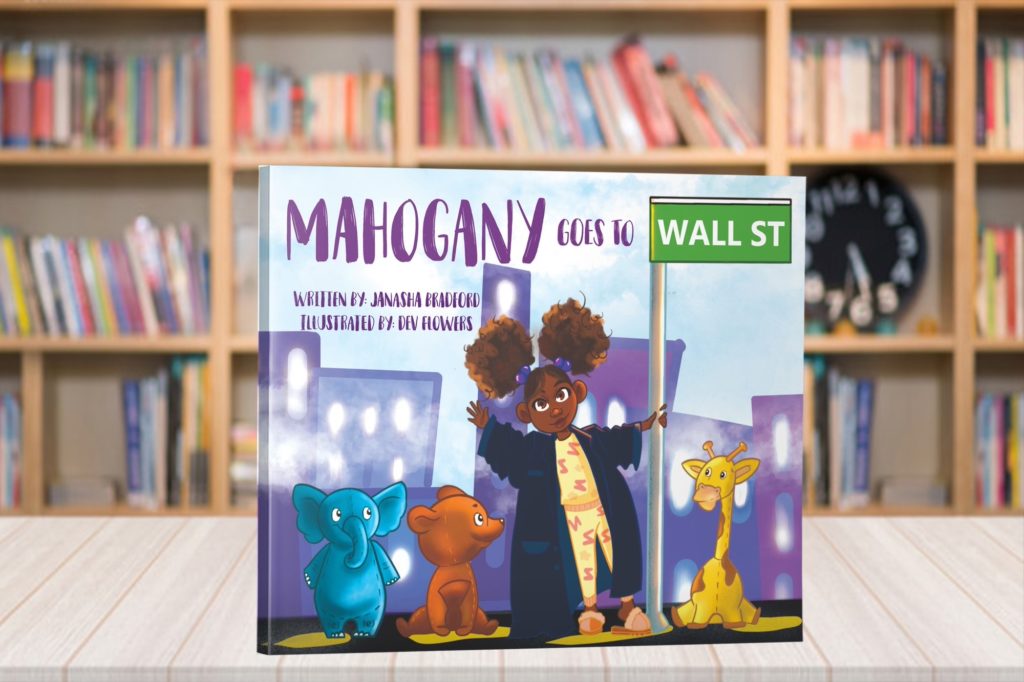Janasha Bradford was seven years old when her father died and her family’s financial crisis began.
She watched her mother manage the payout of her father’s $500,000 life insurance policy. They moved from New Jersey to a home they purchased in Charlottesville. By the time Bradford was in Hampton University in 2008, though, the money had run out. She came home to visit and bills were stacked on the dining table.
“Mom, what’s all this mail?” she remembers asking. Her mother often “buried her head into the dirt,” Bradford said, overwhelmed by bills that she didn’t know how to handle.
Bradford’s mother, it turns out, made investments that failed. The family lost the Charlottesville home in 2008 and Bradford pulled out of college.
“I really watched her life struggle and be so scared,” Bradford said. “She was scared that she had no information ever about finances or how to do it.”
Bradford never wanted to feel as disempowered as her mother so she started to learn about money while studying in college and now works in the financial industry. She wants to extend the financial knowledge she’s gained over the years to young children of color.
That’s where “Mahogany Goes to Wall Street” comes in. Bradford wrote the story, which was illustrated by Dev Flowers, and formed her own company, 12 Eleven Publishing, to publish it in December 2021. The tale follows Mahogany, an imaginative Black girl who embarks on a journey from her home to Wall Street to pitch her flying candy machine to investors. She, along with some stuffed animal friends, set out to make an initial public offering, IPO, or first public shares of a company — teaching her friends and readers about financial markets along the way.
“Having that education early on in your life, I feel like, sparks children’s brains to say, ‘Hey, I know about this. Let me find out more,’” Bradford said. The book is written for children as young as 5 years old.
What happened to Bradford and her mother is not uncommon when it comes to financial issues within the Black community. But it’s not an easy gap to overcome. White families typically have eight times the wealth of Black families and five times the wealth of Hispanic families, as mentioned in a survey published by the Federal Reserve. Black people in America are also less likely to be homeowners, according to the U.S. Census.
One way to change those statistics is with financial literacy, knowing how to do things like maximize savings, plan for retirement and manage a budget. A recent survey by TIAA Institute, analyzed by researchers at George Washington University, found that Black Americans on average tested lower on its P-Fin Index, an online survey that measures financial literacy, than their white counterparts. The study also notes that Black Americans are more likely to carry student loan debt and engage in additional work outside of their primary job to pay bills.

“If we’re not educated on [finances], and we don’t know from an early age, it can look like a foreign language,” author Janasha Bradford said. “Mahogany Goes to Wall Street” is written for children as young as 5.
Credit: Courtesy of 12 Eleven Publishing.
Bradford wants the children who read her book to feel confident when they have financial opportunities and careers. She wants them to not be intimidated by finance as they grow older, and also to be able to negotiate for themselves in spaces where women and people of color are often underpaid.
“If we’re not educated on [finances], and we don’t know from an early age, it can look like a foreign language,” Bradford said.
“Mahogany Goes to Wall Street” is the first book of the Mahogany and Friends series. The next installment, Bradford said, will follow a boy named Malcolm and his journey with investing.
“I want children to know about all the things that I felt like I had to learn along the way,” Bradford said.
Looking for another children’s book to inspire you? Here’s how “A Promise to Grow,” about children in the Westhaven community of Charlottesville and their garden, came to be.
Editor’s note: One paragraph in this story was corrected on March 24 to better reflect Bradford’s position on negotiations and careers.











